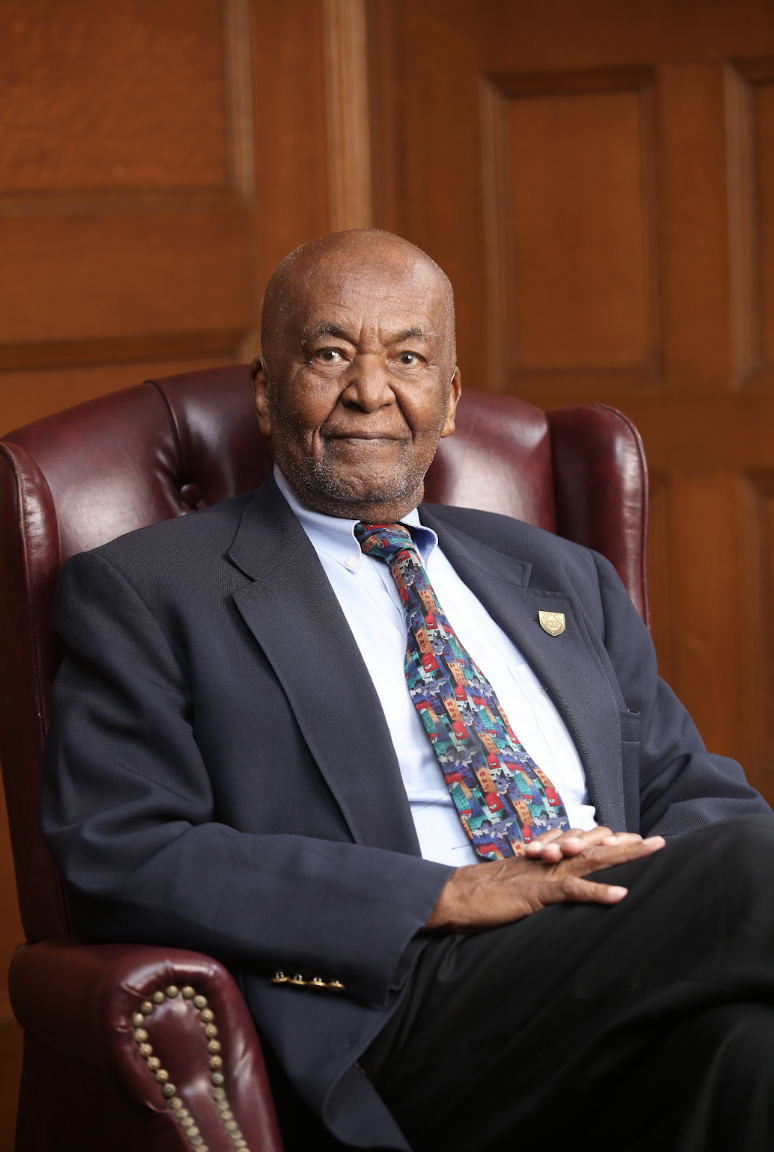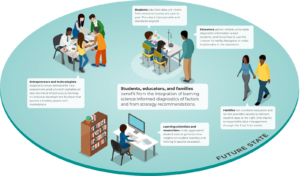Grounding Assessment in the Service of Learning

For decades, American education has been constrained by a model of testing that is far better at ranking students than at helping them learn. We measure, sort, and certify, yet often fail to provide the meaningful insight that could spark curiosity or guide a teacher’s next move. This paradigm of one-size-fits-all testing is simply inadequate for guiding improvement or fostering deeper understanding. Following a charge from Professor Edmund W. Gordon, we must fundamentally reconceive assessment as a tool for learning, not merely measurement. This transformation is not a distant dream; it’s a potential being unlocked by new thinking in three key areas: how we design assessments, how we ground them in the sciences of learning and improvement, and how we guide technological innovation resonant with these aims to serve students.
Design Principles and Frameworks for Assessment in the Service of Learning
The work begins with a new set of design principles, born from the recognition that assessment for and as learning must complement assessment of learning. Rethinking these foundations, as argued in the new Handbook for Assessment in the Service of Learning, is an urgent prerequisite for a more just and effective education system. This perspective is anchored in a few core priorities. First, assessment must generate insights on what matters most—the complex cognitive, affective, and behavioral skills needed for success—rather than merely what is easy to measure. It also requires new design approaches that leverage modern learning science and the affordances of technology, from interactive simulations to real-time data analytics, to create more authentic tasks. Ultimately, this innovation must center on its “value proposition”: its direct usefulness to learners, educators, and families, grounded in valid, trustworthy evidence of student learning that is gathered fairly across diverse groups.
Designing assessments “in the service of learning” requires tipping the balance toward benefit over harm. This transformation demands we anchor assessment in human-centered design, which means centering the needs of underserved students and actively involving learners, families, and educators in the development process. As Baker, Everson, Tucker, and Gordon identify, core design principles must be deliberately crafted for assessment to support every student. This means that new assessments must be transparent in their purpose, link directly to feedback and instruction, support motivation, and accommodate learner variation with fair and valid tasks.

Toward an Assessment Ecosystem Grounded in the Sciences of Teaching and Learning
These design principles represent a critical first step, but their success hinges on a deeper foundation: a modern understanding of how people learn. Decades of research identify learning not as an isolated event, but as a complex, dynamic, relational process shaped by a learner’s social, cultural, and physical context. Therefore, effective assessment must account for the ‘individual-in-context,’ centering a student’s cultural and environmental assets rather than relying on context-free tasks grounded in real-world experiences. This requires that the design of assessment tasks draw on everyday and community language and cultural practices that value human variation. As a result, our very conception of assessment quality must expand to incorporate efficacy and responsiveness as priorities.
To serve learning, assessment must become what Armour-Thomas calls a pillar of a dynamic pedagogy, mutually reinforcing curriculum and instruction. Assessment, embedded in these interdependent pedagogical processes fosters an error- tolerant classroom climate for students to bring their learning potential to full bloom. This vision extends to large-scale assessments, which, as Badrinarayan proposes, can be reimagined as authentic, curriculum-anchored, and culturally responsive tools that provide timely insights to support, rather than simply measure, development. This approach resonates with the call from Marion and Evans for balanced assessment systems that privilege cognitive complexity and authentic, open-ended tasks in rich classroom environments. It comes to life through what LeMahieu and Cobb call “practical measurement for improvement”—embedding frequent, fine-grained measures within daily practice. Rooted in improvement science, these are not endpoint audits, but timely, context-specific insights that help educators identify “what works, for whom, under what conditions”.
Harnessing Emerging Technologies: Innovation To Assess, To Teach, To Learn
For years, putting these scientifically-grounded, context-rich ideas into practice at scale has been a daunting challenge. Today, however, emerging technologies are creating new possibilities. Recent advances in artificial intelligence are transforming educational assessment, creating both opportunities and risks. Developers can now leverage AI to create interactive tasks, deliver real-time feedback at scale, and use generative AI to support content development and automated scoring. These technologies can make assessment more adaptive, accessible, and formative than ever before. Yet these innovations force a critical choice: will AI merely boost the efficiency of an old paradigm, or will it truly catalyze new approaches that enhance learning, consistent with Gordon’s vision? The challenge is to ensure that innovation—fueled by rich learner data and new methods to detect meaningful patterns—is guided by values and evidence to advance a learner-centered system.
While artificial intelligence offers powerful new tools, it also introduces critical challenges, demanding responsible AI practices to ensure validity, fairness, and bias mitigation. Assessment can be made more effective, personalized, and educative if we intentionally design and deploy AI in alignment with these principles of fairness, validity, and human development. The ultimate challenge is to harness these emerging technologies through principled innovation, ensuring they advance practices that are human-centered, just, and dedicated to cultivating every student’s potential.
This blog series on Advancing AI, Measurement and Assessment System Innovation is curated by The Study Group, a non-profit organization. The Study Group exists to advance the best of artificial intelligence, assessment, and data practice, technology, and policy and uncover future design needs and opportunities for educational and workforce systems.

Eric Tucker

Edmund W. Gordon








0 Comments
Leave a Comment
Your email address will not be published. All fields are required.